Where did Texas' Swedish food culture go?
I asked that question in 2013. How has the answer changed a decade later?
As I unpack the story of my recent trip to Sweden, I wanted to do a little time travel with you back to 2013, where my interest in Sweden and my ancestral heritage really started to take off.
At IKEA, of course.
I was working as a food writer at the Austin American-Statesman at the time, exploring every type of cuisine and food culture I could find in Texas. But Swedish food culture was noticeably absent from my research.
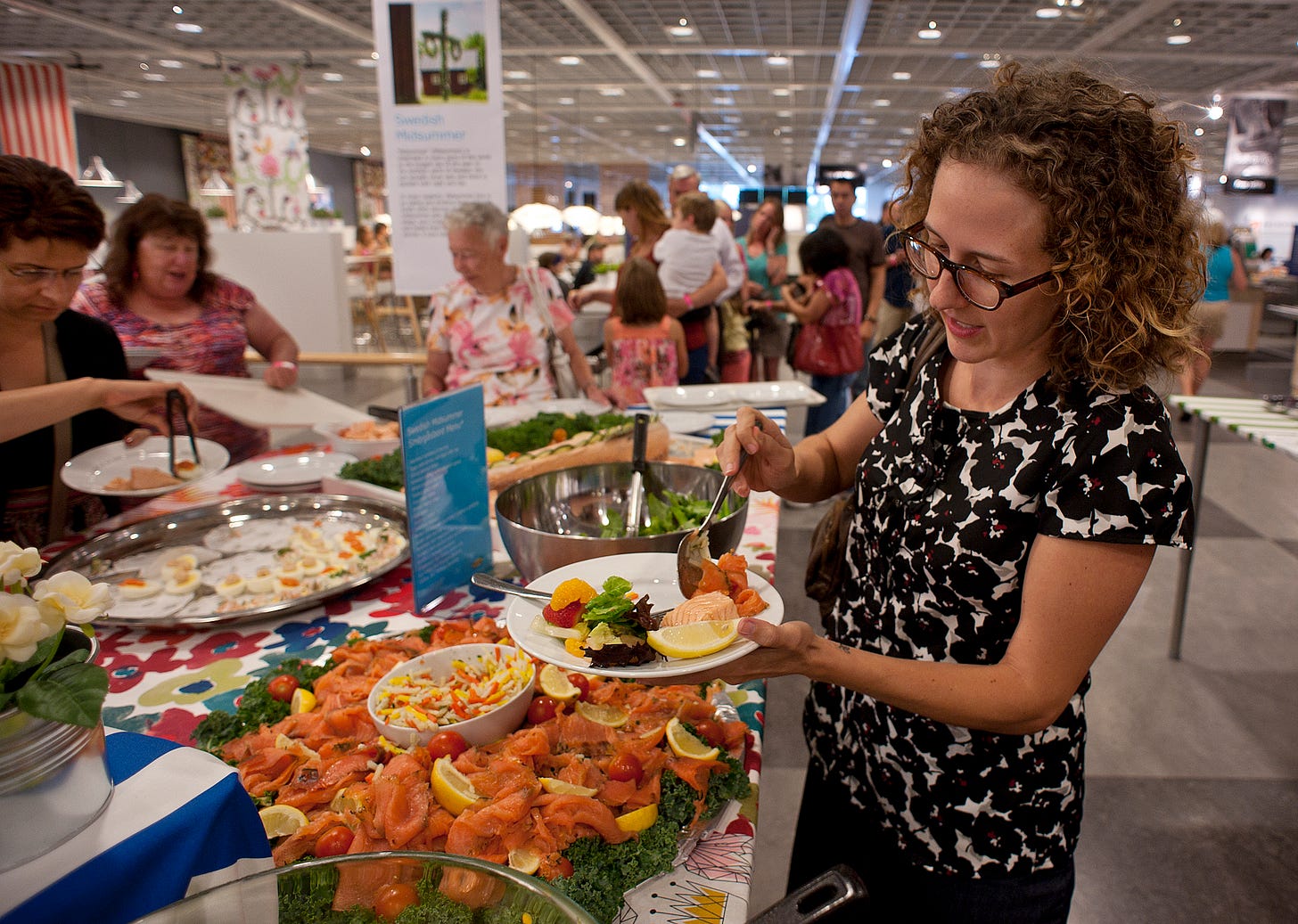
Then I got an invite to IKEA’s midsummer celebration, and I was surprised what I found when I went there.
I hope you enjoy catching up on this piece that laid the groundwork for some things I’m writing about this summer.
To update this story: These days, you can get top-notch kanelbullar and other Swedish baked goods from The Fika Table and Easy Tiger, and Swedes in Austin know that you can get pickled herring at H Mart. Central Market sells salty licorice, but not in the long ropes that I found when I was there last month.
IKEA in Round Rock is hosting their midsummer buffet on June 21, and the local SVEA chapter is hosting one at a private club in Steiner Ranch. The Swedish Association of Elgin and Vicinity, Inc. is planning their annual midsummer event on June 23 at 7 p.m. at the Elgin SPJST Lodge.
There still aren’t any Swedish restaurants in Texas like the very Swedish Al Johnson’s cafe in Door County, Wisconsin or an upscale place like Aska in New York. (A Nordic food hall stand in Houston called Golfstrømmen closed earlier this year.)
It’s interesting to me that in the 11 years since this story published, I’ve traveled as far as Wisconsin and Chicago to explore the bits and pieces of Swedish culture that all those immigrants left all those years ago.
RELATED: Crying with strangers: 48 hours in Andersonville
Kolaches, Kafka and one very old castle (no, not that one)
The next stop on my Scandinavian studies journey will take me to the American Swedish Institute in Minneapolis, where they have all kinds of classes and activities, some of which are online.
Until then, don’t be surprised if you see me working in the IKEA cafe on these hot summer afternoons.
But I’m not there for the meatballs.
I’ll be there to think about the smörgåsbord I enjoyed when we gathered with our long-lost cousins that fine May day at their house an hour outside Stockholm just a few weeks ago. We ate on many of the foods mentioned in this article as we talked and shared stories that opened an ancestral door that had been closed for 100 years.
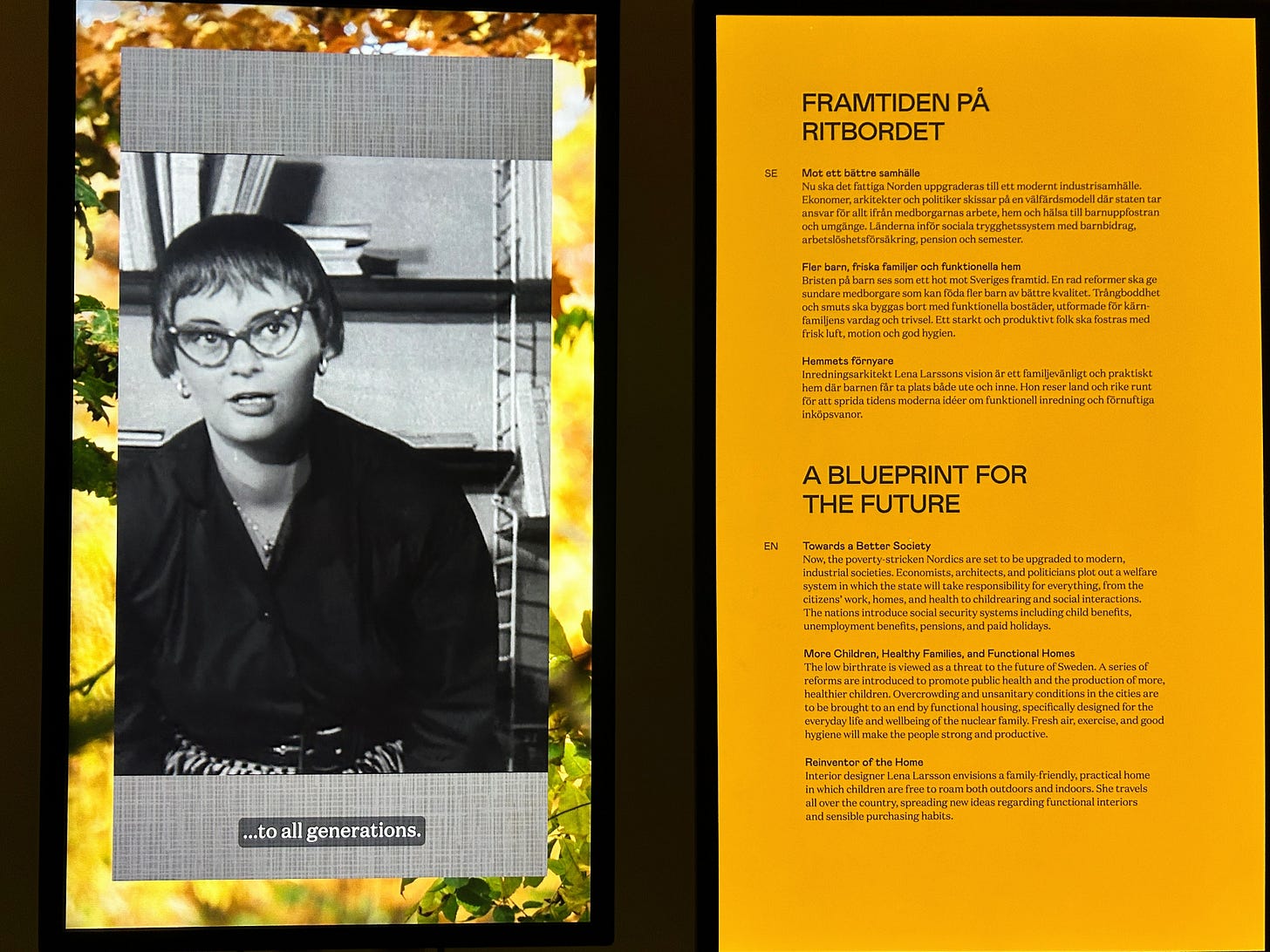
I’ll also be there, sipping my free IKEA coffee, thinking about what Lena Larsson called “a home for healthy and happy people.” She’s the journalist and designer I learned about at a museum in Stockholm who shared revolutionary ideas about home design that have influenced every single one of our homes. (Even if we don’t shop at IKEA.)
More on both of these experiences in the coming weeks.
Thanks for all your support on this long and winding road.
Addie
Exploring Swedish heritage at IKEA’s midsummer feast
By Addie Broyles
Originally published July 19, 2013
Even though more than 160,000 Texans claim Swedish descent, their German and Czech counterparts have done a better job at keeping their culture in the public eye, particularly when it comes to food.
Barbecue and kolaches are an easier sell than lutefisk, but when I got an invite to a midsummer smörgåsbord at Ikea last month and immediately thought about meatballs, I realized how little I knew about the food of my ancestors.
First, a little history about Swedes in Texas. We have Swante Swenson, the state’s first Swede and, later, one of its largest landholders, to thank for helping create what became known as the “Swedish pipeline,” a system of bringing thousands of Swedes to Texas for jobs in the mid- to late 1800s.
In fact, so many immigrants came from a small town in southern Sweden called Barkeryd that in 1975, Gov. Dolph Briscoe proclaimed its residents as honorary citizens of Texas.
You can’t go far in Central Texas without finding a relic of these Swedish founders, most often preserved in the names of towns, roads or, most notably, the airport. (A fact to keep in mind next time you fly out of the Austin airport: John August Earl Bergstrom, born in Austin to Swedish parents in 1907, was the first Austinite killed in World War II.)
But despite a long, rich history, places that celebrate Swedish foodways are hard to find. Timothy’s Scandinavian Treats in Austin and European Bistro in Pflugerville have closed in recent years, and though you can get Swedish pancakes at the Original Pancake House on West Parmer Lane, I haven’t been able to pinpoint a single Swedish restaurant in the Lone Star State outside the IKEA cafes in Dallas, Houston, San Antonio and Austin, which are something of a cultural hub for Swedes and Swedophiles.
My own trail back to Sweden leads to Gotland, the island in the Baltic Sea that my great-great grandfather, Gustav Anders, left in 1882. He landed in Springfield, Mo., an area of the country that most of that side of my family still calls home.
Gustav’s wife, Karolina, came over 10 years after he did, but even though this wonderful story has survived all these years, the truly Swedish food customs did not.
We didn’t eat Swedish pancakes or lutefisk, even though my grandmother speaks fondly of them, and we didn’t celebrate midsummer, the longest day of the year and one of the biggest holidays in Sweden.
For more than 60 years, the Elgin Swedish Association has hosted a midsummer celebration, which this year featured a chicken fried steak dinner, but what a surprise it was to find native Swedes, Americans of Swedish descent and plenty of folks who were just interested in smoked salmon and cold ham enjoying a traditional smörgåsbord late last month at IKEA, which opened off Interstate 35 north of Round Rock in 2006.
If you’ve ever been to this hard-to-miss giant store, you’ve probably strolled through the grocery area near the checkout lines, where you’ll find hundreds of products, from elderflower and lingonberry syrups to cured and smoked salmon, fish roe spread and, of course, meatballs.
But IKEA’s midsummer feast happens in the cafe, the restaurant inside the store helmed by chef Jason Bomer, a West Texas native of German and Native American descent.
Bomer, who left Nordstrom’s famously upscale cafe to take over the kitchen at IKEA earlier this year, has had to learn a lot about Swedish food and culture in his new job, especially in preparation for the four traditional feasts that the store hosts each year: two at Christmas and Easter, one at midsummer and a crayfish boil in August.
“We try to take the Swedish and Americanize it,” he says, “but a lot of Swedes come in to get a taste of home.”
RELATED: What St. Lucia taught me: You can't force tradition, even at Christmas
Bomer says that he has regulars who come to the cafe just for the meatballs or to meet up for coffee, but most of the dishes in the smörgåsbord feast were items you couldn’t buy on the regular menu.
A whole poached salmon greeted guests at the buffet, followed by platters of prinskorv (the Swedish version of Vienna sausage, Bomer says), hard-boiled eggs with various accouterments, boiled dill and rosemary potatoes, and three kinds of cured and smoked salmon with corresponding sauces, and tables full of rhubarb pies, almond cake, cookies and dome-shaped prinsesstårta, also called princess cake.
Not surprisingly, most diners passed over the pickled herring, but Bomer’s cheesy potato gratin with just a hint of herring tasted like a Thanksgiving favorite with a twist.
Right next to the soda foundation, where diners filled glass after glass with an effervescent and perfectly sweet lingonberry soda, musicians from the Annoying Instrument Orchestra played traditional and nontraditional tunes.
Among the dozens of customers who came for the first of three seatings was Sweden native Bertil Fredstrom, who moved to Texas for a two-year stint at IBM more than a decade ago and decided to stick around. (Fredstrom left the tech world to become a full-time magician, and he now runs Fantastic Magic Camp.)
Fredstrom has been known to come to IKEA just to pick up rye crispbread or strong Swedish coffee (“We’re the biggest coffee drinkers in the world,” he says) but he also tries to come to the special events, too.
IKEA doesn’t serve the flavored vodkas that he’d usually enjoy at midsummer in his homeland, but Fredstrom says the meatballs and salmon are spot on.
“The only thing is: We’re never indoors for midsummer,” he says.
So, with all the shared Swedish heritage in Texas, why aren’t there more restaurants or bakeries in the state? Fredstrom’s best guess is that Texas Swedes prepare heritage dishes at home with family or friends but that the cuisine is too limited to support standalone establishments.
“I look forward to midsummer, but I really look forward to the crayfish party,” Fredstrom says of the event next month. Unlike Cajun crawfish boils, the Swedes boil crayfish in salted water with dill and then serve them cold at a feast called Kräftskiva, Fredstrom explains. (See box with details.)
At the table next to Fredstrom was Deborah Mathison, a Cedar Park resident whose mother is from Sweden and whose father’s family is also Swedish.
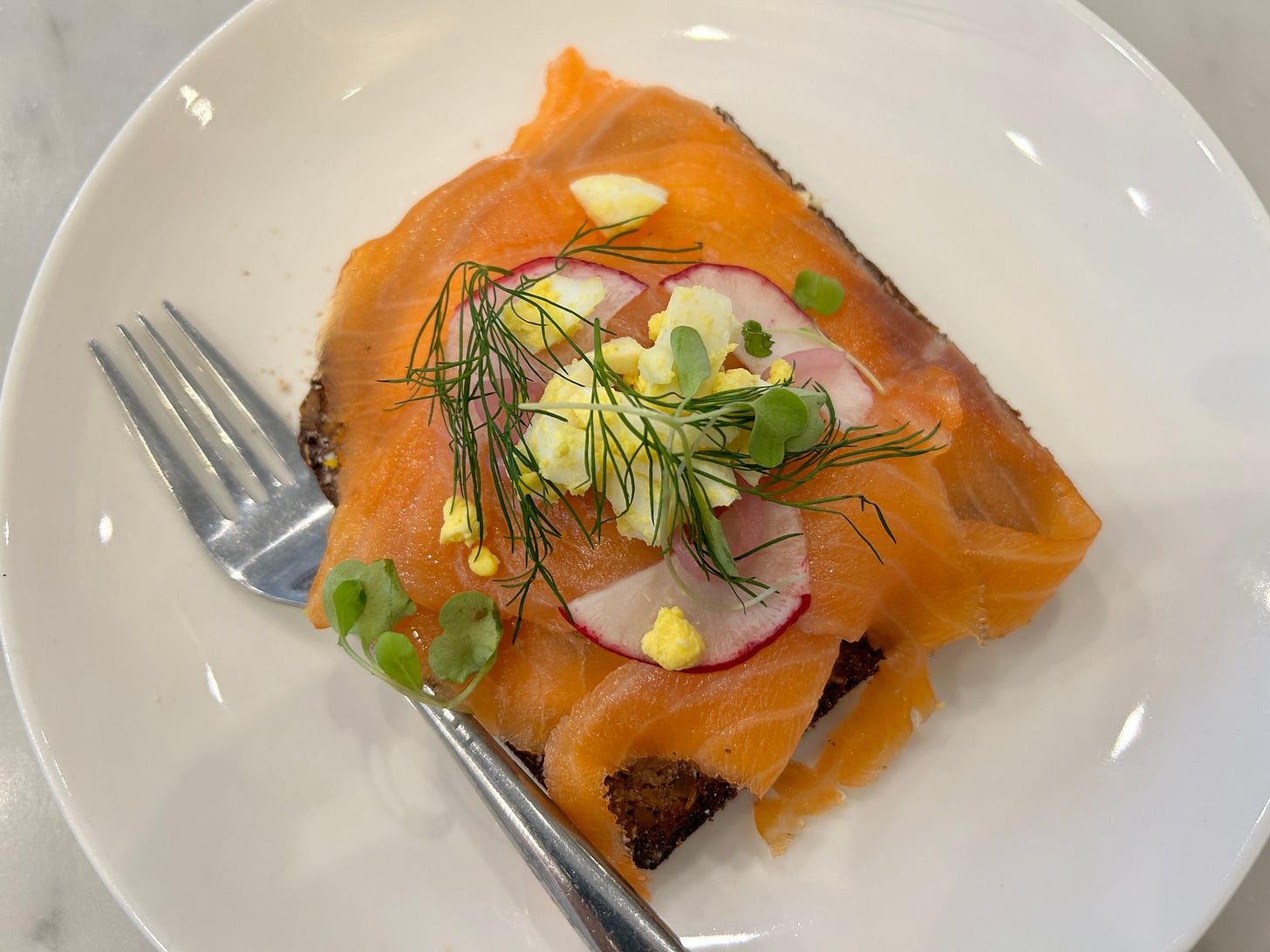
Mathison grew up inundated with Scandinavian culture, particularly when her family lived in a Swedish neighborhood in Chicago called Andersonville, where they could buy lutefisk at Erickson’s Delicatessen, a shop that is still selling the famously smelly fish and other traditional foods today. (Editor’s note: Erickson’s Delicatessen has since closed.)
She says she remembers her grandmother making lutefisk at home by burying whitefish in potash and then leaching the lye from the fish, a task performed outside because of the terrible odor.
“Even the cats and dogs didn’t want it,” she says. “I can still remember to this day how strong that smell was.” Despite the smell, she has learned to love to eat it.
“At Christmas, every good Swedish child has to eat a small square of lutefisk or else they couldn’t open their presents,” Mathison says.
Mathison went to midsummer in Sweden with her mother 13 years ago, and she says that even though the bread was harder and the sausages colder, the IKEA smörgåsbord was “excellent approximation of the real thing.”
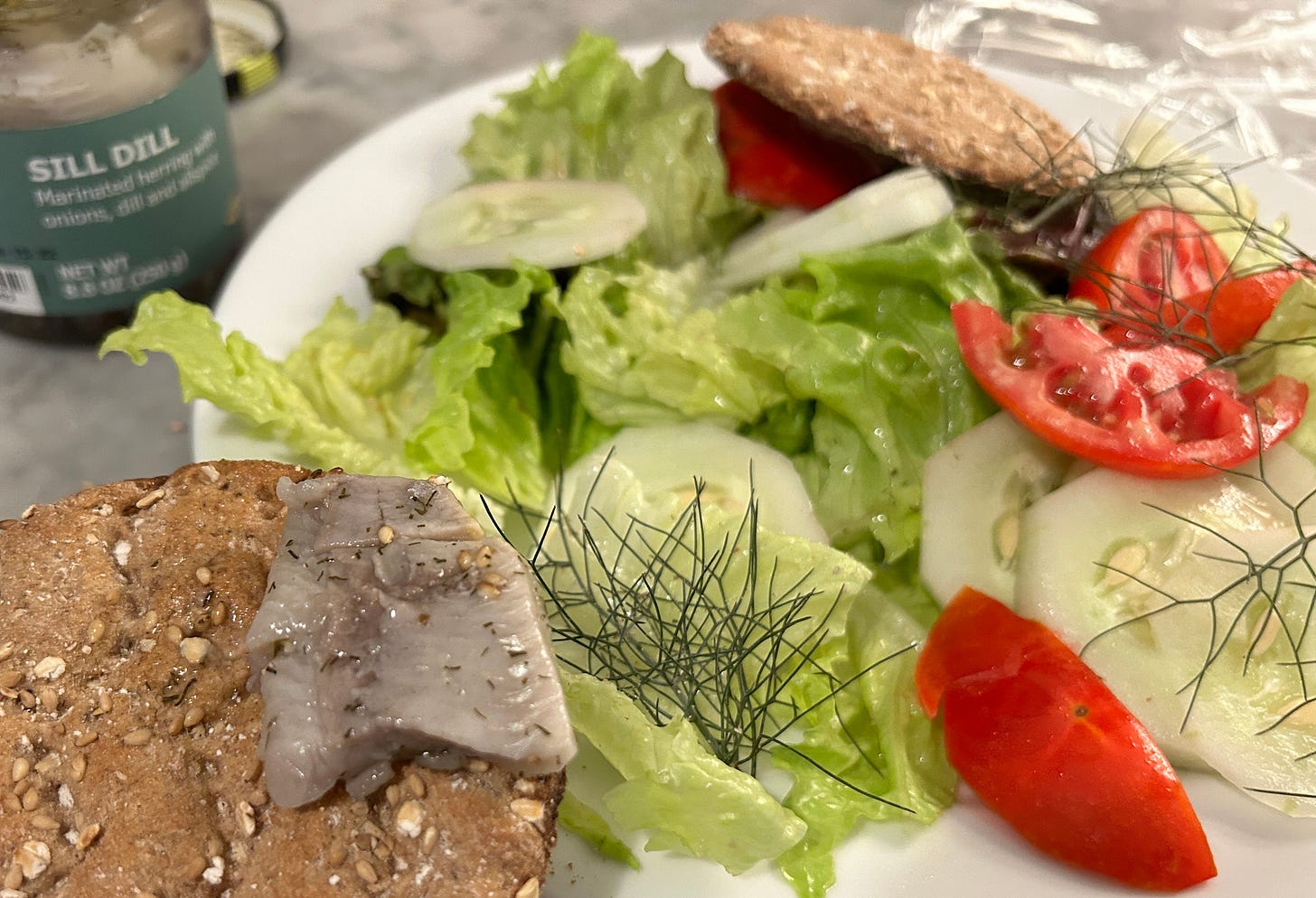
Also enjoying the event were Dawn and Hakan Riggestad, who were celebrating their 31st anniversary.
Their sweet story starts 32 years ago when Hakan Riggestad, who was born and raised in Sweden, was an exchange student living with Dawn Riggestad’s family in Pennsylvania and didn’t have a car. She had already left home for college, but they met when she came home for a visit.
She started coming back on the weekends to show Hakan Riggestad around, and by the time he went back to Sweden at the end of summer, they were in love. Dawn Riggestad bought a one-way ticket to Sweden around Christmas, and they married at the following midsummer.
They eventually moved back to the United States and to Austin, but now they come to IKEA’s midsummer feast to celebrate their anniversary every year.
“It’s cheaper than a trip to Sweden,” she says.






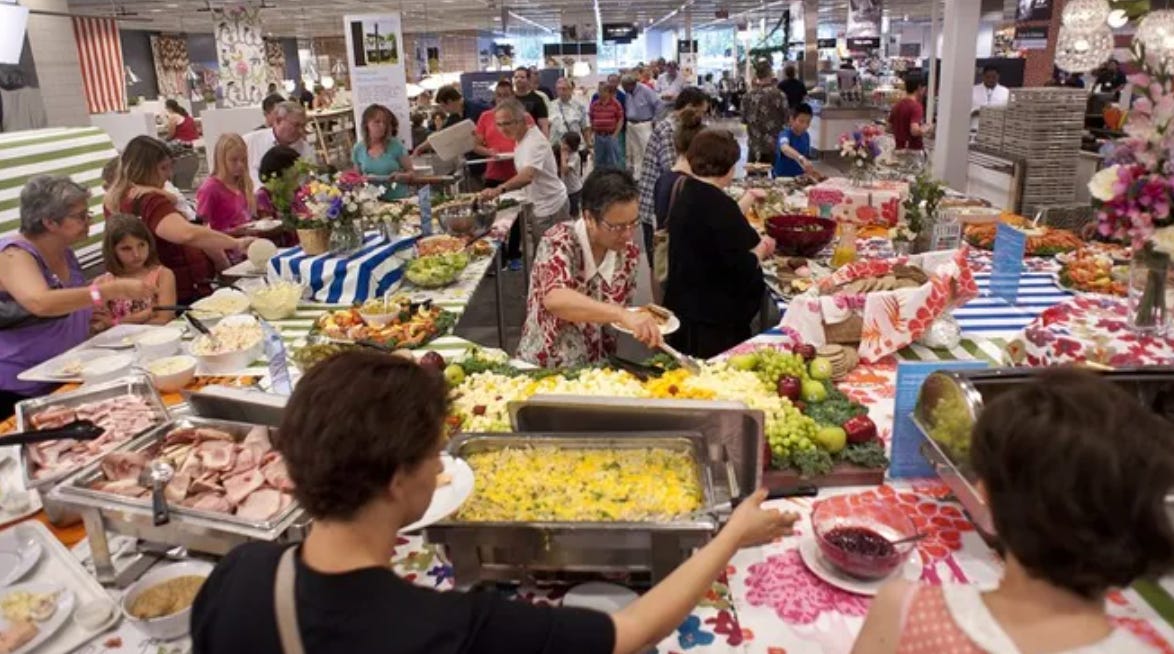
OMG, that photo of Lena Larrson. Icon!